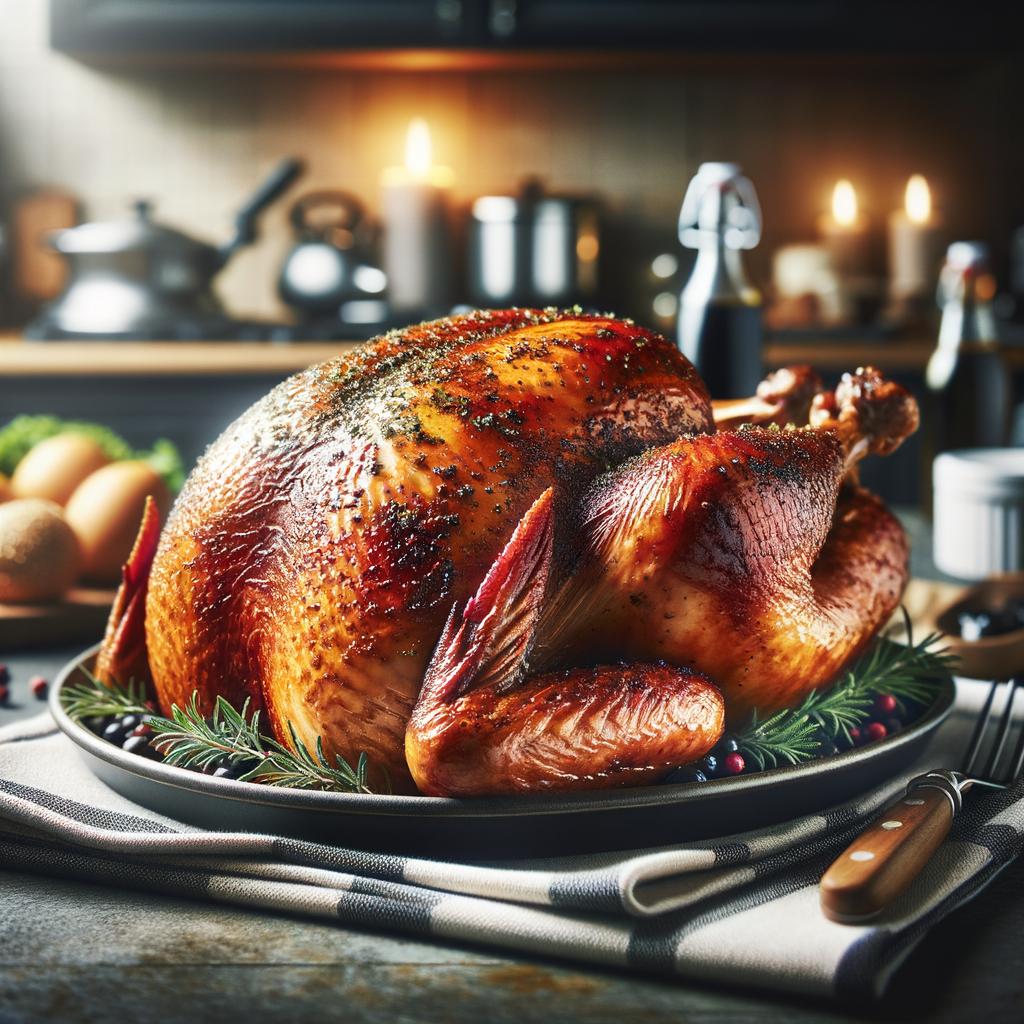Turkey

Description
The star of the show, the centerpiece of our Thanksgiving table, and a beloved ingredient in many kitchens around the world - meet the humble yet majestic Turkey. A large bird in the genus Meleagris, it is native to North America and is recognized by its distinctive fanned tail and wattled neck. Its meat is a beautiful blend of white and dark, with the former being mild and delicate, and the latter, rich and intense. The skin, when roasted to perfection, turns a stunning shade of golden brown, crisp to the touch and bursting with flavor. What sets turkey apart from other poultry is its size, making it an ideal choice for festive feasts and large gatherings.
Primary Uses
Turkey is a versatile ingredient in the culinary world. It's often the main attraction at holiday feasts, particularly in American and Canadian Thanksgiving and Christmas celebrations. The bird is typically roasted whole, stuffed with a delightful mixture of herbs, bread, and other ingredients. However, it's also used in everyday dishes such as sandwiches, salads, and soups. Ground turkey is a popular choice for a healthier alternative to beef in burgers and meatballs. Beyond the kitchen, the turkey holds a place of honor as the national bird of the United States, symbolizing abundance and gratitude.
History
The history of the turkey is as rich and varied as its flavor. Native to North America, turkeys were first domesticated by the ancient Mayans and Aztecs, who revered them for their size and fertility. When Spanish explorers arrived in the New World, they were fascinated by these large birds and took them back to Europe. Over time, turkey became a popular choice for Christmas feasts in England, a tradition that crossed the Atlantic with the early American settlers. The turkey's role in the first Thanksgiving feast is a cherished part of American folklore, and its status as a symbol of gratitude and abundance has endured to this day.
Nutritional Information
Turkey is not just a feast for the senses, but also a boon for our health. It's a lean source of high-quality protein, helping to build and repair tissues. It's also rich in essential vitamins and minerals, including B vitamins, selenium, and zinc. The white meat is lower in fat and calories than the dark meat, making it a popular choice for those watching their weight. However, the dark meat contains more vitamins and minerals. Compared to other poultry like chicken, turkey offers a similar nutritional profile but with a distinct, richer flavor. Whether you prefer the lightness of the breast or the robustness of the thigh, turkey is a nutritious and delicious addition to any meal.

